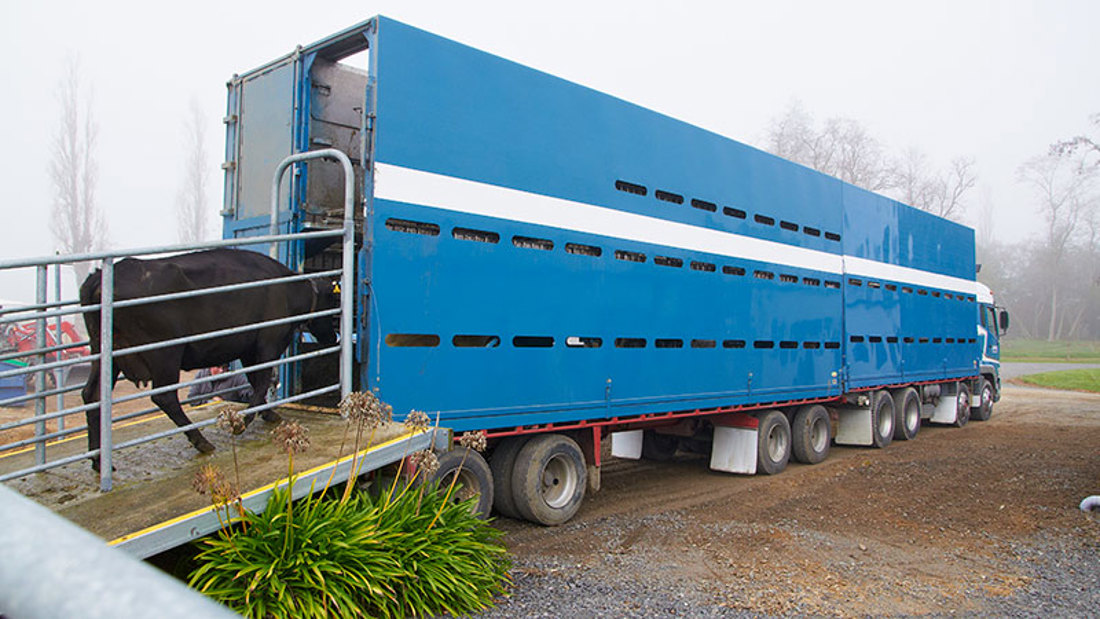Transporting stock
2 min read
Transport is stressful for livestock. With good preparation on-farm, and everyone in the supply chain playing their part, we can ensure cattle arrive at their destination fit and healthy.
Care and preparation on farm prior to transport will help your cows stay healthy on their journey.
Lactating cows have a higher risk of metabolic issues during transport and need extra attention. Always double-check their destination on the day; if it's further than normal, keep older or lighter cows back.
When booking a stock transporter, ask around for recommendations and/or ask enough questions to ensure you are comfortable trusting your animals in their care:
Request that cull cows are sent to a processing facility nearby to minimise transport distance. It is better for the animal as the risk of injury or going down increases with time and distance. If space is tight, and the distance is longer than normal, keep older or lighter cows back.
Only transport cows that are not likely to give birth during the journey or within 24 hours of arriving at the destination. If stock are within 4 weeks of calving date, travel time should be less than 2 hours.
Contact your vet, transport operator or processing company if you are unsure whether an animal is fit for transport. Some conditions will require veterinary examination and certification if appropriate. Check the following:
The cows that are leaving are kept in a small, grazed out paddock with ad-lib hay, so they can lie down and rest. Shortly before the truck arrives, I put them on the yard with a cutdown 200L drum. It’s easy to fill with the pressure hose and the cows have access to water until they are loaded.
Farmer tip
Lactating cows have a higher risk of metabolic issues during transport. They can’t top up their calcium during travel because they aren’t eating but they’re still putting calcium into producing milk. The longer they travel the more likely it is their muscles will run out of calcium. Give them roughage, extra calcium, and constant access to water until the time of loading.

Video 1.45 min
Ensure your NAIT records are up to date, all animals are tagged, and you’re completing all NAIT actions within the required timelines.
Now’s the perfect time to check in, plan, and set up for a strong season. We’ve pulled together smart tips and tools to help you stay ahead all winter long.
Whether you prefer to read, listen, or download handy guides, we’ve got you covered with trusted tools to support your journey every step of the way.
Put our proven strategies and seasonal tools to work. Boost production, support animal health and watch your profits hum.